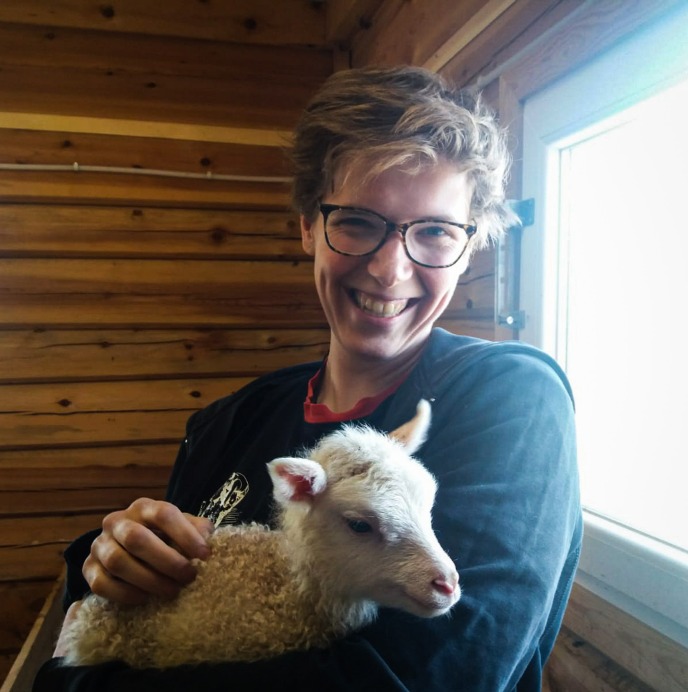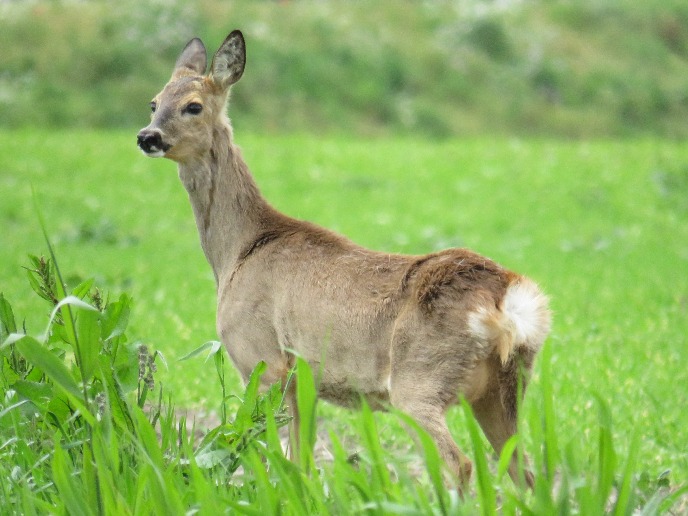Rudolf Agricola interview: Van Hall Larenstein student Roos Ahlers graduates on research on the ecology of solar parks
Interview: Marco in 't Veldt
Student Roos Ahlers is conducting her graduation research under the supervision of Sylvia de Vries. As a UG-PhD candidate, de Vries has been researching the ecology of solar parks for five years. As her temporary assistant, Roos has been conducting several ecological studies at Solar Park Vlagtwedde and Solar Park Midden-Groningen.
‘I find the relationship between nature and humans interesting ,’ says Roos Ahlers. She is a student at Van Hall Larenstein College in Velp. During her graduation period, she has been conducting research on the ecology of solar parks: ‘I specialize in applied ecology. The degree program starts with two years of general courses, after which you can choose your specialization. This could be, for example, forestry, but my interest lies in studying ecosystems. This involves examining the interactions between organisms, but also considering the role of non-biological factors, which of course, often involve humans as well’.

Special internship placement
It all began with an article in the Dagblad van het Noorden. In that article, Roos read about the initiation of research into the ecological impact of solar parks, as conducted by Sylvia de Vries under the guidance of her supervisor, Dr. ir. Raymond Klaassen from the University of Groningen, and Fellow of the Sustainable Landscapes theme of the Rudolf Agricola School for Sustainable Development.
The research is being conducted at a large number of solar parks and in their vicinity, allowing for the comparison of the effects of solar parks under various circumstances. Roos: 'I found her on LinkedIn and sent her an email. Luckily, she responded with enthusiasm right away. After that, we also talked to her supervisor, Dr. ir. Raymond Klaassen, and came up with an assignment for me. I am now conducting a kind of pilot for the research Sylvia will be doing, to assess the suitability of the chosen methods and whether these can be further developed within Sylvia's research. If everything goes well, I will be finished in October.'
‘The fact that the research has been going on for so long not only provides a great opportunity to observe changes over the course of several months but also has a practical reason. I actually fall under the student loan system. That's why I work full-time, as otherwise, I would end up with a massive student debt.' Interestingly, Roos works as a chef in a steakhouse. 'I've been a vegetarian since I was eleven and have no idea what it tastes like, but I’m always told that I can cook a very good steak.'
Solar energy, of course, has the advantage of being a clean energy source that doesn't generate direct greenhouse gas emissions during the production of energy. But what about other environmental aspects? Solar parks can also contribute to the conservation of biodiversity when properly designed and managed. Suitable habitats for certain plants, insects, and small animals can develop under and around the panels. With careful planning, solar parks can provide an opportunity to support local flora and fauna and increase biodiversity.

Potential benefits of solar parks
During her research at the solar parks, Roos conducts mouse counts and vegetation surveys. 'I do this in Vlagtwedde and Midden-Groningen. I examine what grows under and around the panels, how dense and tall the vegetation is. I also count the number of mice.
Additionally, I look at factors like soil moisture content. Naturally, it’s dark and humid under the panels, but even the rest of the soil is often quite wet. This may be due to the use of heavy machinery during the construction of the parks, which would have compacted the soil. It is also old agricultural land. Meaning it was once worked with heavy machinery, compacting the soil while only ploughing the top layer.
As a result, there's often an impenetrable layer at around sixty centimeters deep, causing water to accumulate. Therefore, you often see a lot of reeds, ferns, and nettles in such areas. You rarely see mice, except in the higher areas. The advantage of mice, of course, is that they create networks in the soil, allowing moisture to drain better.
Now that it is no longer agricultural land, there will be no heavy machinery driving over the terrain for the next twenty-five years, no pesticides will be sprayed, and no manure will be spread. It's exciting to see what the consequences of this will be.'

| Last modified: | 05 October 2023 5.13 p.m. |
More news
-
24 March 2025
UG 28th in World's Most International Universities 2025 rankings
The University of Groningen has been ranked 28th in the World's Most International Universities 2025 by Times Higher Education. With this, the UG leaves behind institutions such as MIT and Harvard. The 28th place marks an increase of five places: in...
-
05 March 2025
Women in Science
The UG celebrates International Women’s Day with a special photo series: Women in Science.
-
16 December 2024
Jouke de Vries: ‘The University will have to be flexible’
2024 was a festive year for the University of Groningen. In this podcast, Jouke de Vries, the chair of the Executive Board, looks back.

